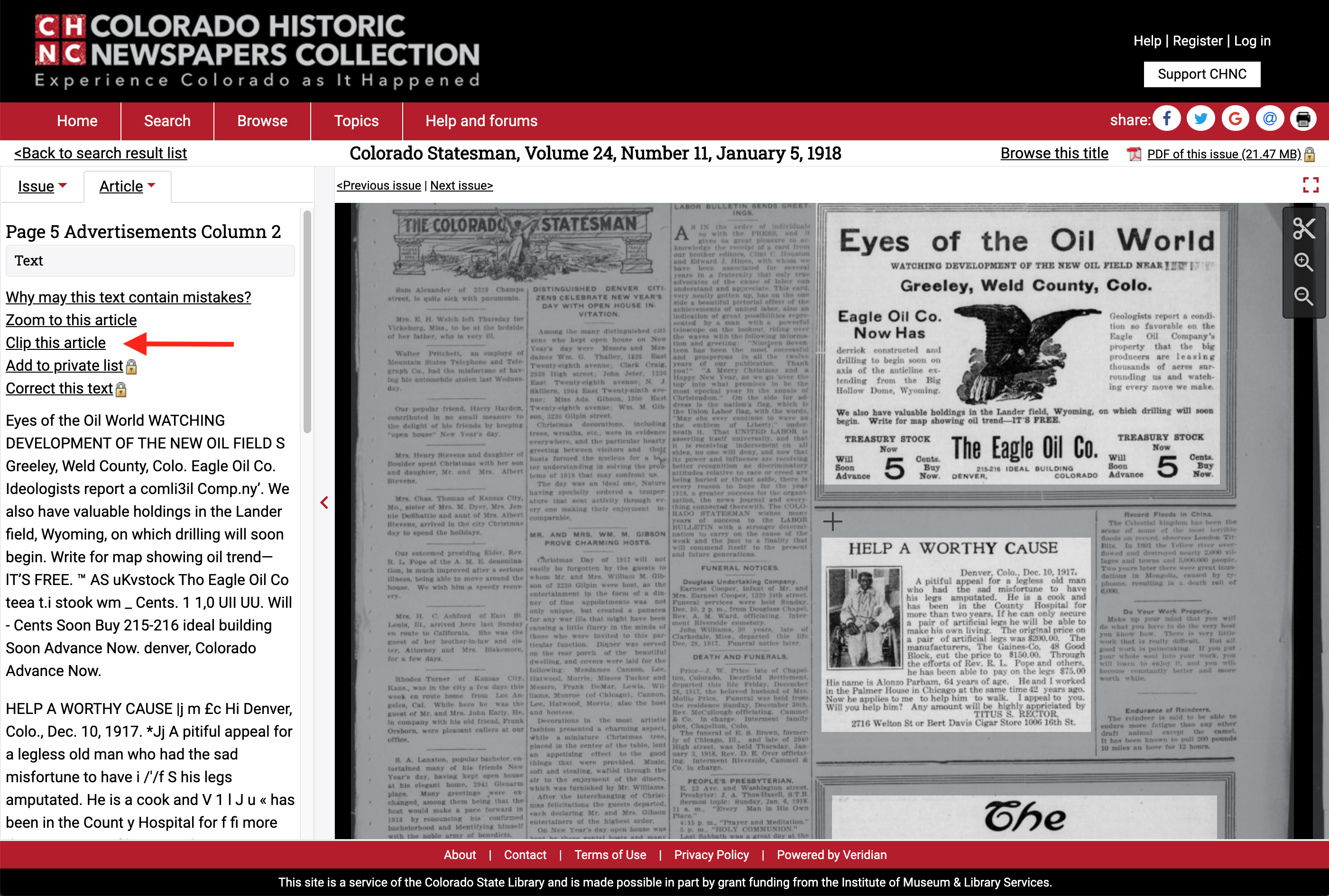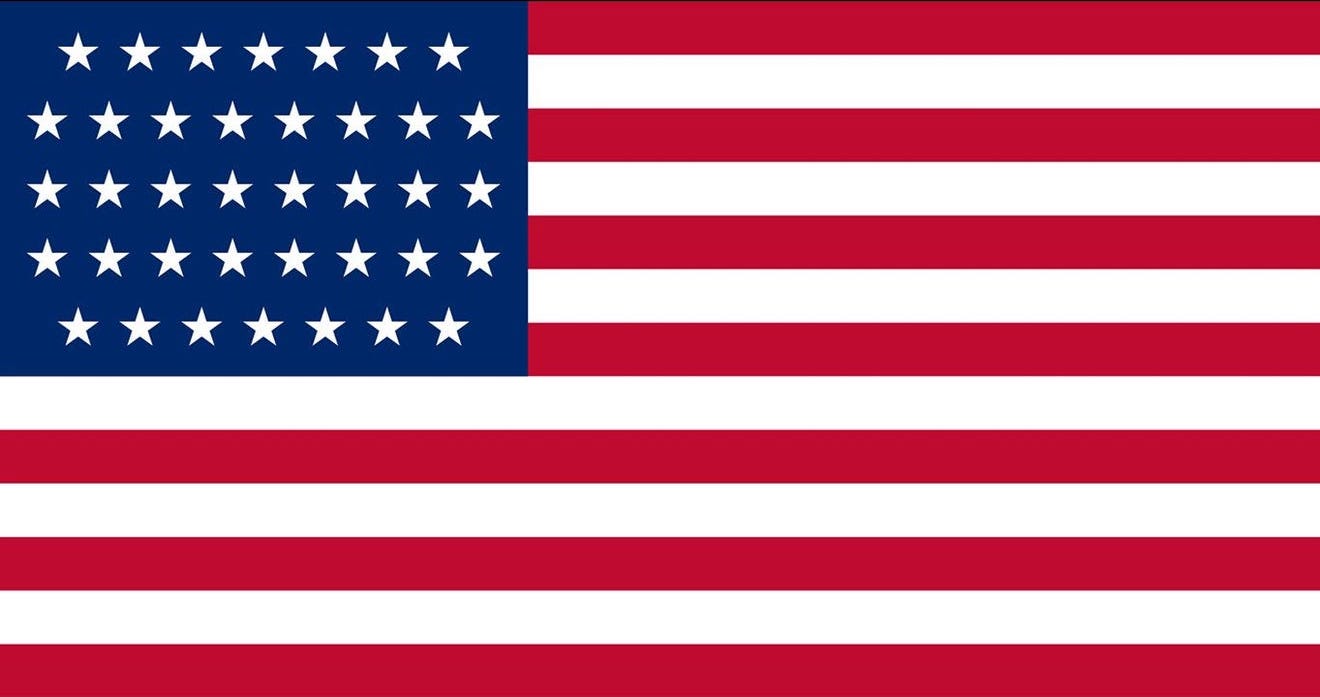Assignment Description
The year 1918 was a momentous one in US history. What did this pivotal year look like for the people who were experiencing it? To find out, you will be writing a modified version of the New York Times’s “Weekend Briefing” (see examples) using one Denver weekly newspaper during one week in 1918 from the Colorado Historic Newspapers database. What was happening at that time in 1918? What were the different issues, topics, events, and stories that this paper was covering?
Use this template to complete your Weekend Briefing and then submit it as a Word document in the following format: Lastname_weekend-briefing-1918.docx (ex. Blevins_weekend-briefing-1918.docx) to this Dropbox folder.
Deadline: Sunday, September 27th by 11:59PM.
What you will learn from this assignment:
- Empathy. What was American life like in the year 1918? You will immerse yourself in another time and place and see the world from that perspective.
- Sleuthing skills. Whether in 1918 or today, you will need to be able to gather and synthesize information in order to fully understand events, topics, or trends.
- Knowledge. You will emerge from this assignment with a deeper understanding of American society during a pivotal moment in the country’s history.
Assignment Instructions
- To select your newspaper:
- If your last name begins with the letter A-K: The Colorado Statesman
- If your last name begins with the letter L-Z: Great Divide
- To select your week: find the 1918 newspaper issue that is closest to your birthday that appears in the database.
Example: If my last name is “Blevins” - which it is - and if my birthday falls on January 1st - which it doesn’t - I would click on January and then analyze the January 5th, 1918 issue of the The Colorado Statesman for my Weekend Briefing.
Read the entirety of the newspaper issue cover-to-cover, taking notes on what any items that catch your eye. Be sure and read not just traditional news stories and editorials, but also things like advertisements, classified ads, sports box-scores, theater reviews, poems, etc. When you have finished reading, select six items that you think are both interesting and that, in combination, offer a multi-faceted snapshot of the time and place in which they were printed. I urge you to be creative - just make sure to explain in your reflection the reason for your selections.
You will then write a short summary (“briefing”) for each item that provides details and context. Each of these should be around 150-200 words in length and can be written either as a historian looking backwards at 1918 or from the perspective of someone living during that time period. Being able to concisely summarize an item will require you to do additional sleuthing in order to understand the context, background, and particulars of your items. For instance, if a story about the state legislature mentions a politician who you’ve almost certainly never heard of, look up biographical information about them. Or if that same story is talking about an issue you don’t understand (say, a proposed tax bill), you might want to consult preceding issues from the same paper or other newspapers from that year in Colorado Historic Newspapers to see if you can figure out what they’re talking about. The goal is to gather enough information about the item so that you can effectively summarize it to someone who knows nothing about it. You should list these additional sources at the bottom of each of your six briefings, along with a URL to a clipping of your item (see below under Mechanics for more details).
At the end of the briefing, you will then write a 500 word reflection in which you address the following questions:
- What kind of newspaper was it? What sort of hypothesis can you make about the newspaper’s readers and their interests? (Demographics, occupations, political leanings, etc.)
- How would you summarize the newspaper’s content? What sorts of things took up the most space - ie. local news vs. advertisements vs. opinion pieces, etc.?
- How would you characterize life in Denver in 1918 based on this newspaper?
- How did you choose those six items? Why do you think they collectively offer insight into that time and place? Were there any other items you thought about including but ultimately did not?
- Did anything either surprise you or confuse you in the newspaper?
What you will be evaluated on:
- Selection of stories. Can a reader get a full sense of this particular time and place by reading your briefing? Think creatively! You should include a mix of different kinds of content and topics - ie. you do not just include six news articles reporting about World War I.
- Mechanics. Are your news items from (roughly) the same week in 1918? Does each item include a URL “clipping” and a list of sources? See below for more details.
- Clarity and conciseness. What is the fewest number of words you need to convey necessary information to a reader who is completely unfamiliar with the topic?
- Depth of knowledge and research. Did you complete the requisite research to familiarize yourself with the item and then convey that knowledge to the reader?
I will be using this rubric to evaluate your work.
More Details on Mechanics:
- The items do not need to be exactly within a week of the newspaper issue’s print date, but should be close to that date.
- Each item will include list of sources that you consulted for more information about that item (Wikipedia, articles, other newspaper issues from 1918, etc.). These do not need to be formatted in any particular way, but if they are an online resource they need to include a URL.
- Each of your six items should include a URL (link) to a “clipping” of the newspaper issue. To generate this URL, click on the article in the newspaper viewer then click on
Clip this articlein the left column. Example URL: https://www.coloradohistoricnewspapers.org/?a=d&d=CDS19180105-01.2.44.2&dliv=none&e=-------en-20--1--img-txIN%7ctxCO%7ctxTA--------0--

